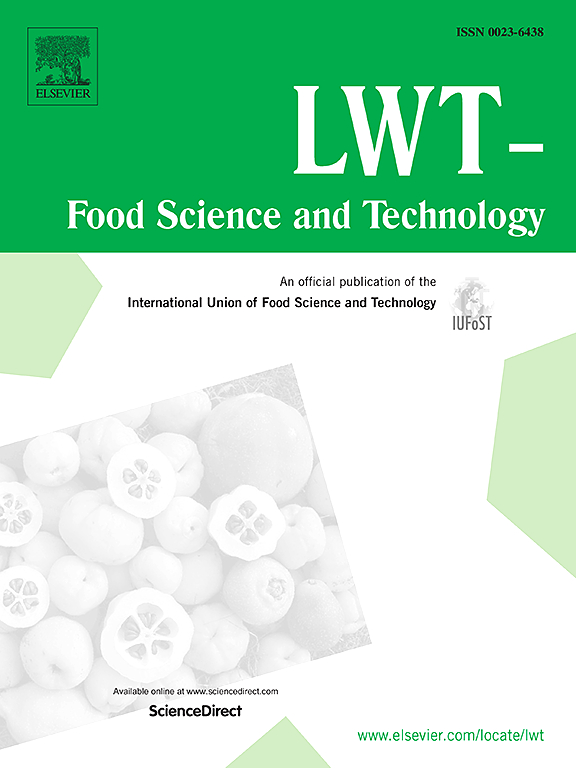球磨处理下淀粉-酚酸复合物的形成和消化率研究
IF 6.6
1区 农林科学
Q1 FOOD SCIENCE & TECHNOLOGY
引用次数: 0
摘要
本文采用不同时间的球磨法制备了玉米淀粉(CS)与对香豆酸(p-CA)和咖啡酸(CA)的复合物。研究探讨了复合物的多尺度结构、消化率和分子间相互作用。球磨处理破坏了淀粉双螺旋的有序性。研磨时间的延长会暴露出更多的活性位点,从而形成表面粗糙的复合物。复合物的理化性质和结构因官能团和研磨时间的不同而有很大差异。p-CA 和 CA 通过非共价键与 CS 相互作用,形成非包合复合物。氢键是主要的驱动力,-OH 和 -COOH 是活性位点。酚酸在淀粉链之间插层,同时包裹残留颗粒,改善了球磨淀粉的短程有序性、热稳定性和峰值粘度。在消化率方面,两种酚酸都能抑制 CS 的消化。不过,用 CA 制备的复合物羟基更多,研磨时间更长,因此效果更好。这项研究为开发低消化率食品提供了依据。本文章由计算机程序翻译,如有差异,请以英文原文为准。
Study on the formation and digestibility of starch-phenolic acid complexes under ball milling treatment
In this paper, complexes of corn starch (CS) with p-coumaric acid (p-CA) and caffeic acid (CA) were prepared using ball milling for various durations. The complexes' multiscale structure, digestibility, and intermolecular interaction were explored. The ball milling treatment disrupts the orderliness of the starch double helix. Increased milling time exposes more active sites, resulting in the formation of surface-coarse complexes. The physicochemical properties and structures of the complexes varied significantly depending on the functional group and milling duration. p-CA and CA interacted with CS through non-covalent bonding to form non-inclusion complexes. Hydrogen bonding is the main driving force, and -OH and -COOH are the active sites. Phenolic acid intercalated between starch chains while wrapping the residual granules, improving the short-range ordering, thermal stability, and peak viscosity of ball-milled starch. Regarding digestibility, both phenolic acids inhibited CS digestion. However, the complexes prepared with CA, having more hydroxyl groups and longer milling times, were more effective. This study provides a basis for developing low-digestibility foods.
求助全文
通过发布文献求助,成功后即可免费获取论文全文。
去求助
来源期刊

LWT - Food Science and Technology
工程技术-食品科技
CiteScore
11.80
自引率
6.70%
发文量
1724
审稿时长
65 days
期刊介绍:
LWT - Food Science and Technology is an international journal that publishes innovative papers in the fields of food chemistry, biochemistry, microbiology, technology and nutrition. The work described should be innovative either in the approach or in the methods used. The significance of the results either for the science community or for the food industry must also be specified. Contributions written in English are welcomed in the form of review articles, short reviews, research papers, and research notes. Papers featuring animal trials and cell cultures are outside the scope of the journal and will not be considered for publication.
 求助内容:
求助内容: 应助结果提醒方式:
应助结果提醒方式:


